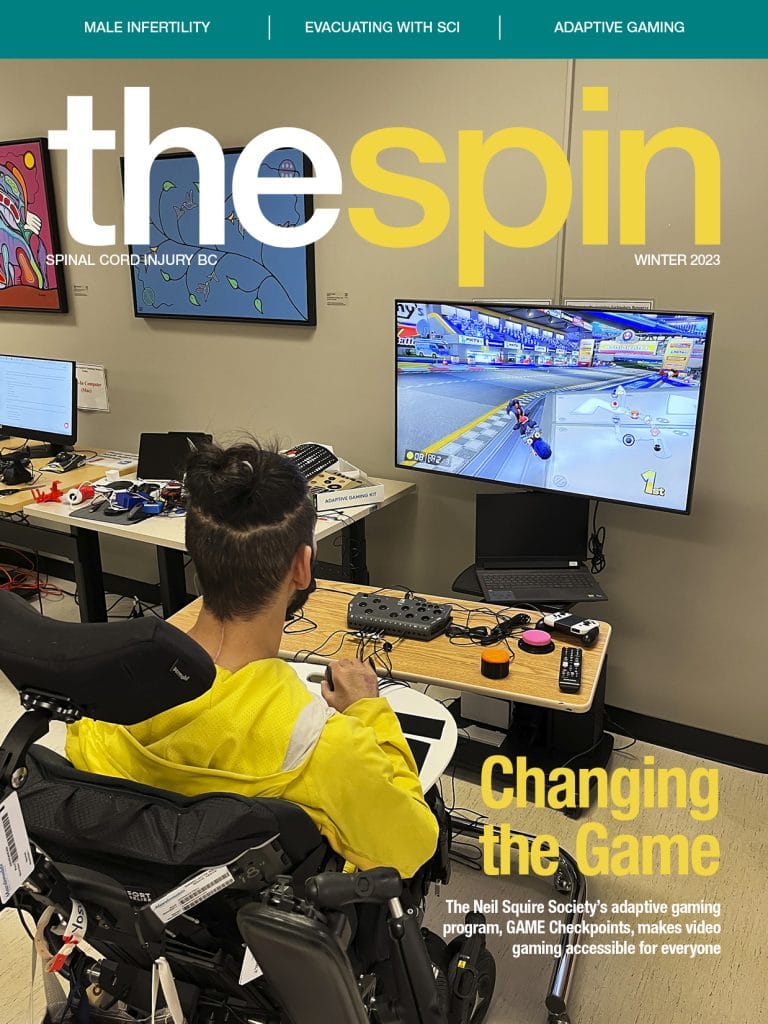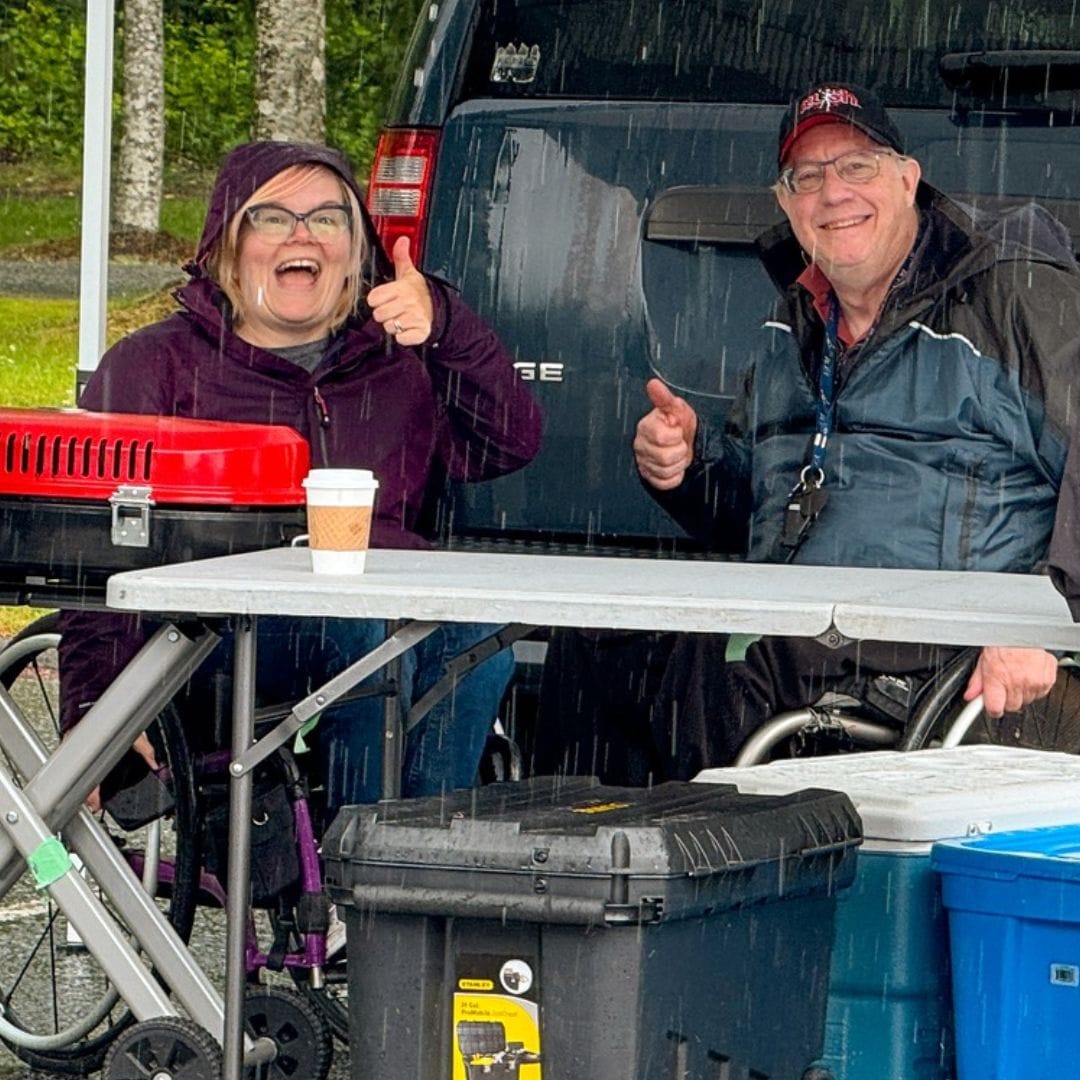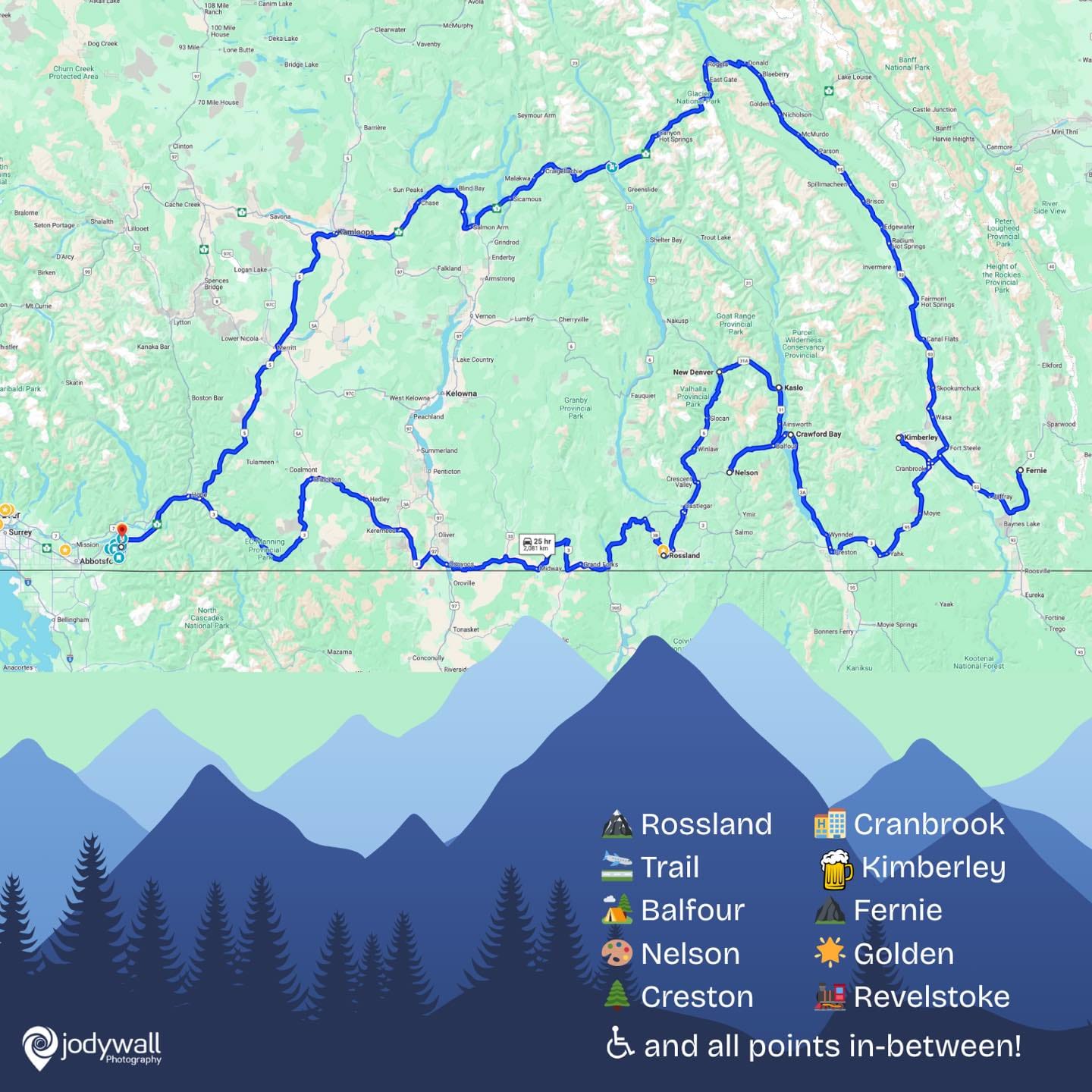
When Dr. Sarah Lawrason found out that her brother, Peter, had been in a motorcycle accident, she didn’t know very much about SCI. She had just started working on her master’s degree in sport psychology at Queen’s University in Kingston, Ontario, where she was studying coaching and leadership. She quickly learned that his life was about to change—a lot. But what she didn’t anticipate is how much it would change the direction of her life too.
Peter sustained an incomplete SCI. Within six months of his accident, he was able to walk. “And when he walked, you know, all the doctors said, ‘This is amazing. I’ve never seen anyone like this. I’ve never met anyone or treated anyone who’s walked after an injury,’” recalls Lawrason.
But while the positive developments in Peter’s recovery were welcome news to Sarah and her family, Peter’s ability to walk led to new challenges—a “mixed blessing” as some might put it.
“It’s a very lonely experience because you don’t actually fit into any of the groups that you’re supposed to fit into,” says Lawrason, reflecting on her brother’s experience. “You don’t look like you have a spinal cord injury, but you also are clearly not able-bodied.”
Here at The Spin, we’ve heard similar sentiments from our readers. In our Fall 2014 and Summer 2020 issues, we featured the stories of several peers with incomplete SCI. Although it’s not an exact science, about half of all people with SCI have incomplete injuries, and between 25 percent and 50 percent of people with incomplete injuries may have some capacity to walk, says Lawrason. That means that as many as one in four people with SCI can walk, but very few resources or programs exist to support this often-overlooked group of people.
It was this gap in programming that led Lawrason to the University of British Columbia Okanagan in 2018, where she began working on a PhD with Dr. Kathleen Martin Ginis, a pioneering leader in SCI and physical activity research.
“When I met with [Martin Ginis], we talked about how there’s really no research at all on people with SCI who can walk on a regular basis, even though it’s actually a growing population,” says Lawrason. “It’s such a personal connection for me. And if we can create a resource for people with SCI who walk where they feel less isolated, that was my goal.”
Over the course of her doctoral work, Lawrason conducted a series of studies focused on better understanding the physical activity experiences of people with SCI who walk. What she learned from these studies culminated in the development of a mobile app to help people with SCI who walk get more physically active and have better quality physical activity experiences.

The app, SCI Step Together, offers physical activity-focused education, peer support, goal setting, and activity tracking—all easily accessible on your mobile phone. “You have access to weekly education modules and a health coach who checks in with you once a week to talk about your barriers and goals related to physical activity, or even other health-related goals,” says Lawrason. “You can also connect with other peers in the program, and then finally, you can track your physical activity—or other metrics like mood, pain, and nutrition—on a daily basis.”
Lawrason and her colleagues partnered with Curatio (now RxPx Inc.), a tech company dedicated to connecting people with support, information and tools that will promote their health, to develop the app. Hosted on Curatio’s Stronger Together platform, SCI Step Together is based on the best research evidence specifically for people with SCI who walk. The team responsible for developing the app included scientific research experts, individuals with lived experience, an SCI community organization, and RxPx Inc.
Beyond filling a gap in existing research and programming, the decision to create a mobile app for people with SCI who walk was grounded in a desire to help users connect with one another and feel less isolated while also improving their health through regular physical activity.
“There are very few people with SCI, just in general, and there are even less who walk. They can live all over Canada and the US, and may feel really isolated as a result,” explains Lawrason. “One of the ways to kind of bring people together is through their phone, and that’s one of the reasons we wanted to do an app. Another reason is that there’s a big community of people on Instagram who are following each other’s rehab journeys and finding support in that way, so we knew that it was going to be a relatively feasible way to connect people.”
The physical activity guidelines for adults with SCI recommend at least 20 minutes of aerobic exercise at a moderate or high intensity twice a week as well as resistance or weight training (3 sets of 10 reps for each major muscle group) twice a week to achieve basic cardiovascular and muscle strength benefits.
Development of the app began with a review of the literature focused on physical activity for people with SCI who walk. The findings of the review confirmed that very few studies exist, and pointed to the need for new research investigating the quantity and quality of physical activity among people with SCI who walk, as well as what influences their physical activity behaviours. So, Lawrason conducted a mixed-methods study to do just that.

“The first part [of the study] was analyzing people’s determinants of physical activity and their physical activity levels using the Physical Activity Recall Assessment for individuals with SCI (PARA-SCI) questionnaire. We had over 40 participants for that study, and it informed the types of behavior change techniques we would use in the intervention,” says Lawrason. “The second part was doing interviews. We interviewed 23 participants to understand the quality of their physical activity, and what factors informed the quality of those experiences. Like, why were those experiences good or why were they bad? And we included all that information in the app itself.”
An important aspect of the process was engaging people with SCI who walk as partners in the development of the app. Three people with SCI who walk reviewed the Stronger Together platform and the preliminary content of the app. They then participated in interviews with Lawrason to provide recommendations for the format and general content of the SCI Step Together program.
The next step involved evaluating the app. Specifically, Lawrason and her partners were interested in testing the feasibility, acceptability, and engagement of the SCI Step Together app for people with SCI who walk. “We wanted to see if the app is actually practical for users. For example, does it require a lot of time to do? Is it really costly? Do people, you know, actually engage with the app and do they like it?” explains Lawrason.
To this end, the researchers conducted a randomized controlled trial with 20 people with SCI who walk. About half of the participants used the app over an eight-week period, while the other half were asked to continue with their normal daily activity without starting any new physical activity programs. Participants completed questionnaires assessing the factors that influenced their physical activity and the outcomes of their physical activity, including its quantity and quality, at the beginning, middle, and end of the eight-week period. In addition, six participants from the group that used the app participated in interviews where they discussed their satisfaction with the app, as well as its usability and recommendations for improvement. At the end of the trial, participants in the control group were invited to use the app as well.

Although the researchers didn’t see any improvements in physical activity as a result of the app, they did find that use of the app came with several other benefits. “Participants who used the app reported better basic psychological needs for their physical activity, meaning they felt more supported, had more autonomy, and felt more competent,” says Lawrason. “They also had more knowledge on physical activity. And I think that was really due to the inclusion of the Physical Activity Guidelines for People with SCI.” Lawrason also noted that because several participants in the study were already physically active before using the app, there may have been a “ceiling effect” for changes in physical activity levels.
The trial also showed that the SCI Step Together program demonstrated good feasibility, acceptability, and engagement. “When you do anything in partnership, it’s just generally more feasible because you have more human resources to work with,” explains Lawrason. “[The program] was totally safe. People were compliant. And the adherence was quite good, although it did wane over time. So, I think in the future, a four- or six-week program might be a better option rather than eight weeks. But overall, people tended to use the app pretty well.”
On the whole, people who have used the app had a positive experience using it. “They were so thankful to finally have a tailored resource for people who walk with SCI,” says Lawrason. “But there were some recommendations too.” For example, while users really liked tracking their physical activity through the app, they would like it to better integrate with the technology they are already using, such as an Apple Watch or Strava.
The app will likely produce the most benefit for people who want to be more physically active, but aren’t sure how to get started, says Lawrason. Even so, she encourages everyone with an SCI who walks to try it. “The more people who use it, the more comfortable people are to connect with each other on the app,” she says. She also recommends that anyone who uses the app focuses on the quality of their physical activity experiences, rather than the quantity.
“Focus on knowing your body and what activities that you’d like to do, rather than needing to achieve every single exercise out there on the planet, and just getting really overwhelmed by all the other people on Instagram that you see that are doing rehab exercises,” she recommends. “Everyone is their own individual, so focus on what works for you.”
You can access SCI Step Together by downloading and creating an account on the Curatio: Stronger Together app, which is available on the Apple App Store and Google Play. Once you’ve created your account, select the SCI Step Together program option. The educational modules are also published on the Canadian Disability Participation Project website at cdpp.ca.
SCI BC’s Ryan Clarkson also hosts an online Ambulatory Peer Group for those who have some form of ambulation (walking) after a spinal cord injury. The group is open to peers who are walking full time, and others who still mostly depend on a mobility device to get around. The group meets online near the beginning of the month—have a look at the events listings on SCI BC’s event calendar for when the next ones are happening.

This article was originally published in the Winter 2023 issue of The Spin. Read more stories from this issue, including:
- Adaptive gaming
- A new treatment for male infertility
- Peers’ evacuation experiences
And more!




